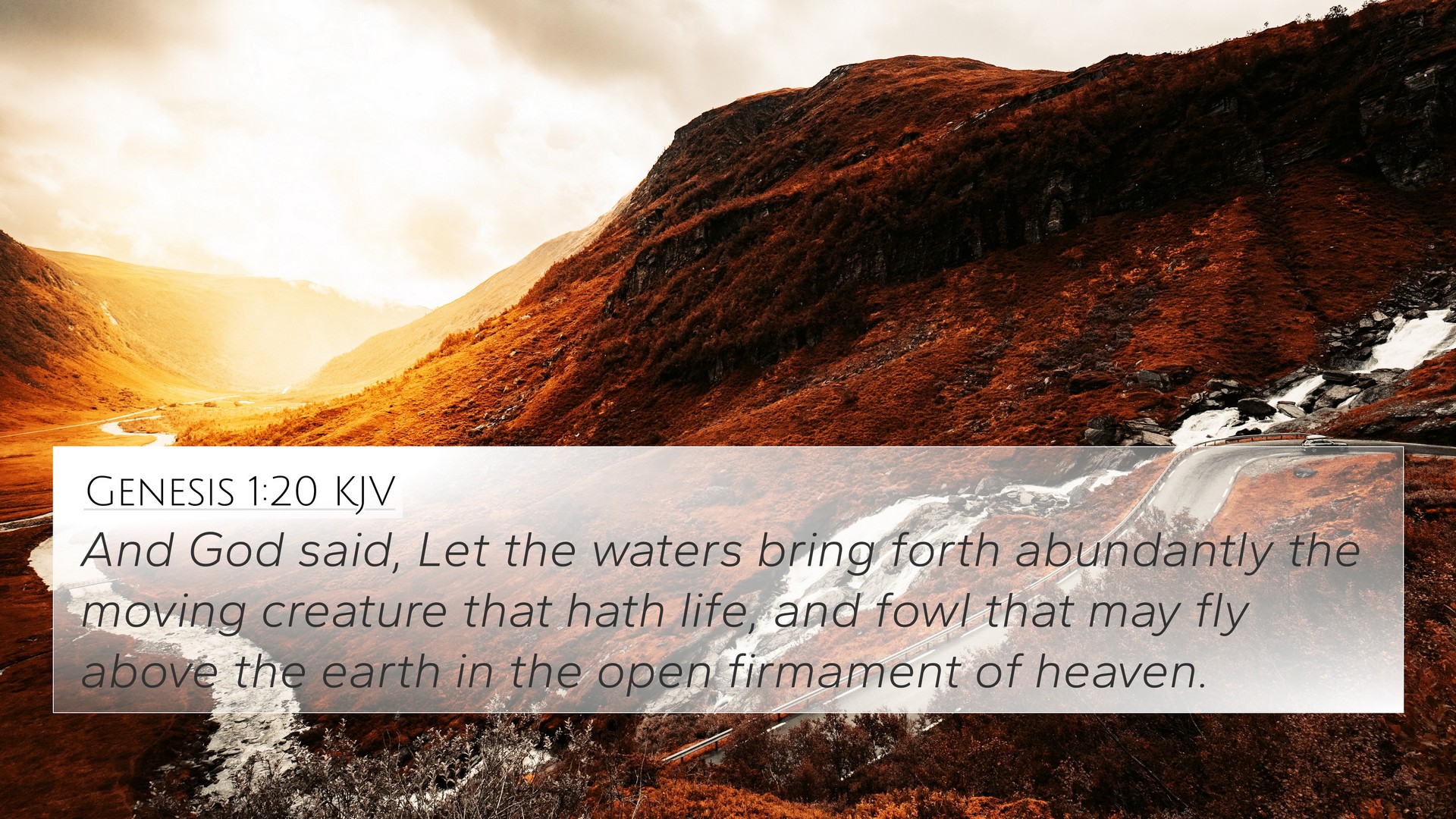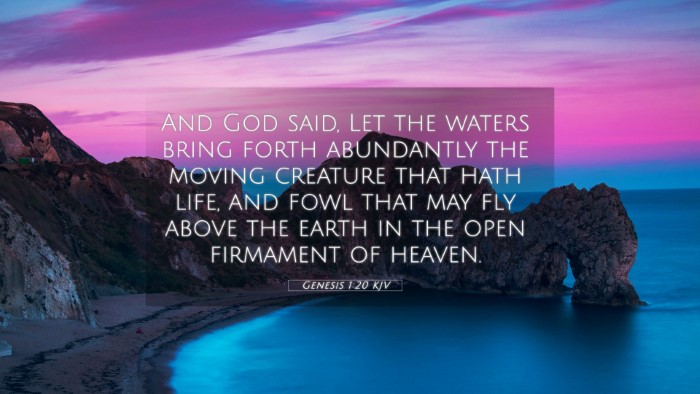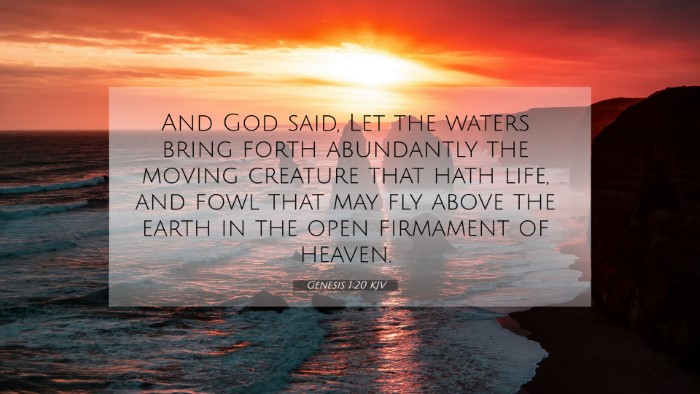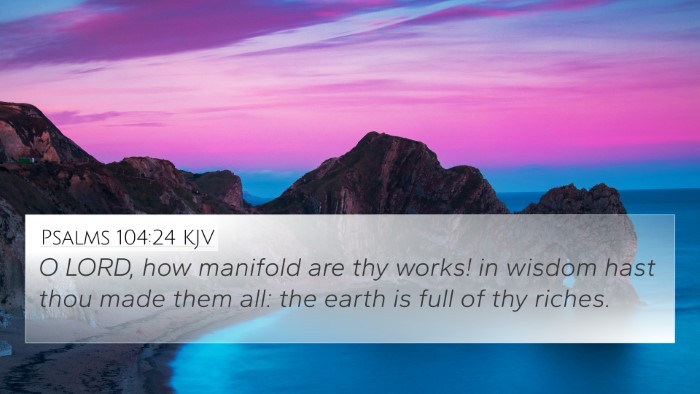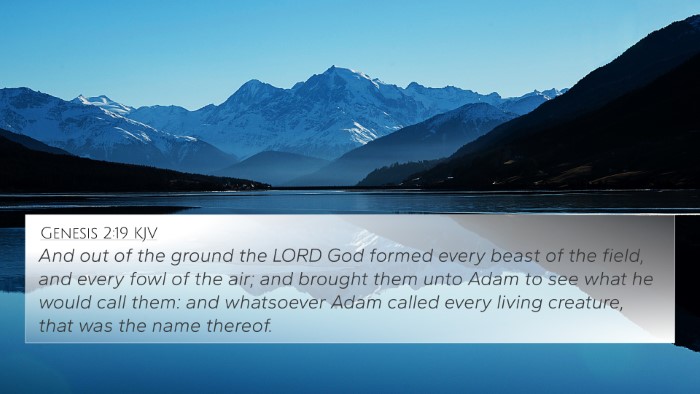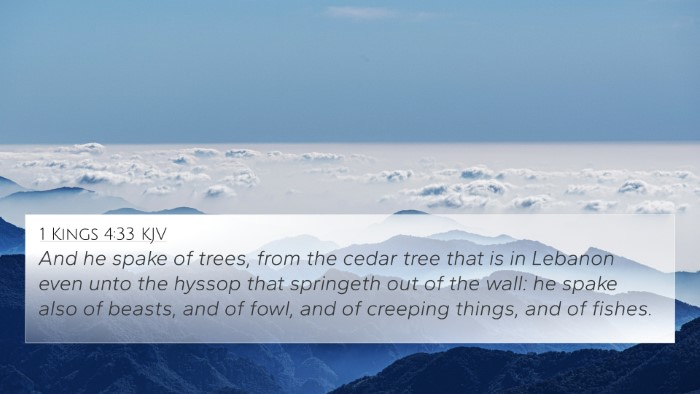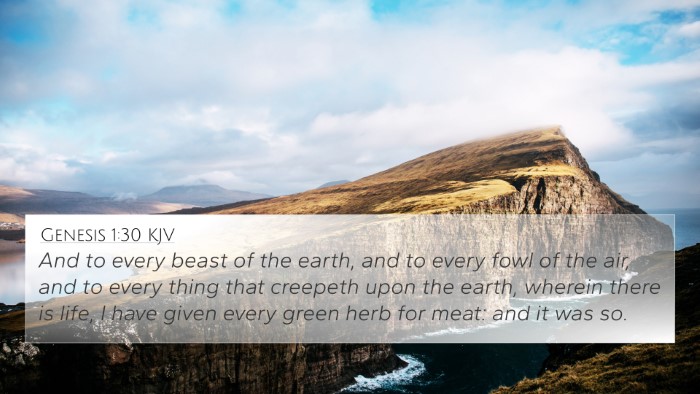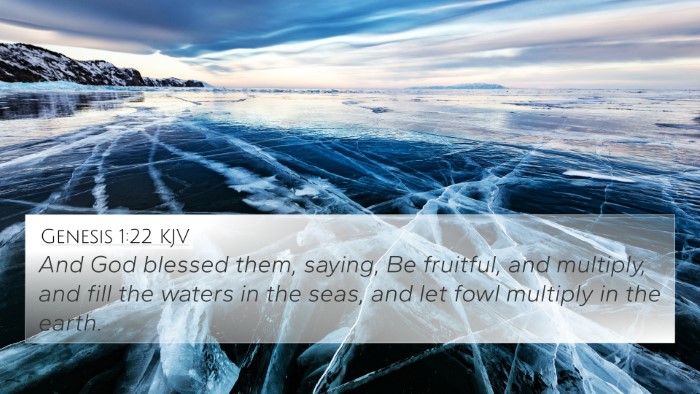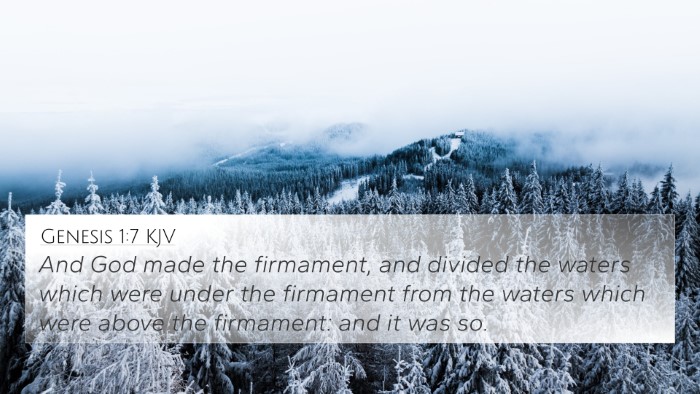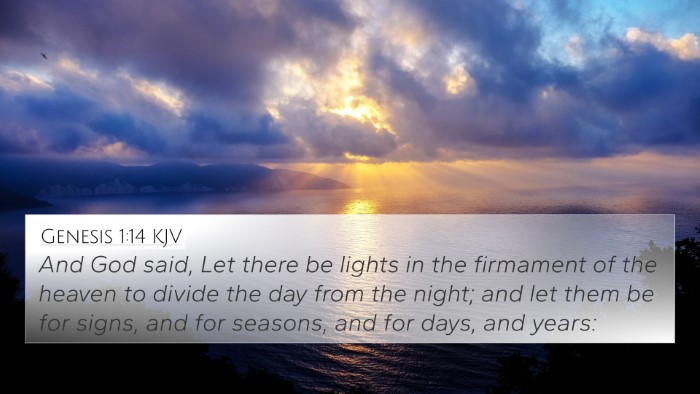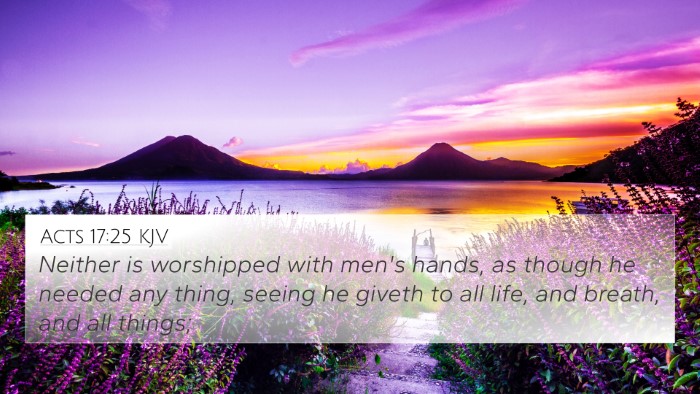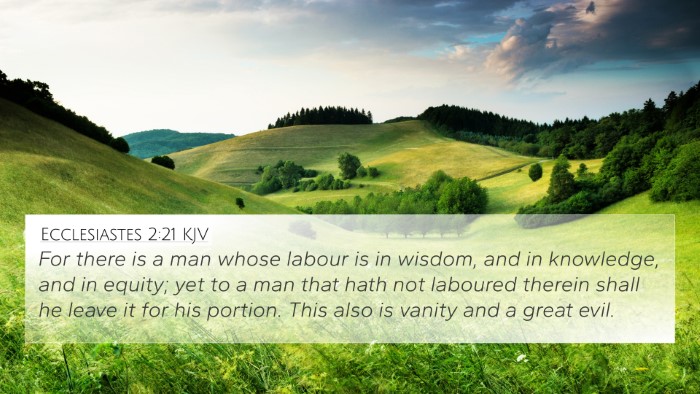Understanding Genesis 1:20
Genesis 1:20 states: "And God said, Let the waters bring forth abundantly the moving creature that hath life, and fowl that may fly above the earth in the open firmament of heaven." This verse marks a significant moment in the creation narrative, highlighting God's command to the waters and the introduction of life within them.
Commentary Insights
The interpretations from public domain commentaries such as those by Matthew Henry, Albert Barnes, and Adam Clarke provide depth to the understanding of this verse:
-
Matthew Henry:
Henry emphasizes God's sovereign command and the abundance He brings forth in creation. He draws attention to the diversity of life that arises from the waters, including both sea creatures and birds. This abundance reflects God's power and ability to create life, showcasing the variety within nature.
-
Albert Barnes:
Barnes elaborates on the phrase "let the waters bring forth." He points out that it symbolizes the divine authority of God over all creation. The emergence of creatures that swim and birds that fly indicates a separation of domains, suggesting both order and harmony in creation. This verse indicates the importance of water in sustaining life.
-
Adam Clarke:
Clarke relates the text to the idea of procreation and the natural order. He explains that the "moving creature that hath life" signifies the vivifying spirit of God, which imbues life into creation. The mention of birds flying demonstrates the dynamic nature of life, with an emphasis on the created order that God establishes in the heavens.
Bible Verse Cross-References
This passage can be cross-referenced with several other Bible verses to enrich its understanding:
- Psalm 104:25-26: Reflects on the vastness of God's creation and the creatures in the sea.
- Genesis 1:21: Continues the account of the creation of sea creatures and birds.
- Isaiah 43:20: Speaks of God's provision for His creatures in the wilderness.
- Revelation 5:13: Contemplates all creation glorifying God, resonating with the idea of life and movement.
- Job 12:7-10: Illustrates how creatures speak to God's handiwork, showing the interconnectedness of life.
- Colossians 1:16: Affirms that all things were created by God, linking creation with New Testament theology.
- Genesis 7:14: Relates to the idea of creatures living in and above waters, connecting the flood narrative with creation.
Connections Between Bible Verses
The verse serves as a pivotal point in understanding the biblical creation narrative, connecting to both Old and New Testament teachings about God's creative power and the vital place of life in God's order:
- Thematic connections highlight God as a life-giver, echoing through the ages.
- Inter-Biblical dialogue enriches the understanding of life and creation found in various texts.
- Cross-referencing helps illuminate the spiritual significance of life forms and God's intentions in creation.
Tools for Bible Cross-Referencing
For further study and exploration of connections between Bible verses, numerous tools exist to aid in understanding:
- Bible Concordance: A helpful resource to find words and phrases across scripture.
- Bible Cross-Reference Guide: Provides insights on how different verses interact.
- Cross-Reference Bible Study: Methodologies to explore thematic connections.
- Bible Reference Resources: Comprehensive guides for deeper study of scripture.
Conclusion
Genesis 1:20 encapsulates the beauty of creation, showcasing God's authority and the life that springs forth from His command. The connections between various Bible verses enhance the understanding of this narrative, emphasizing God's continuous relationship with His creation.
